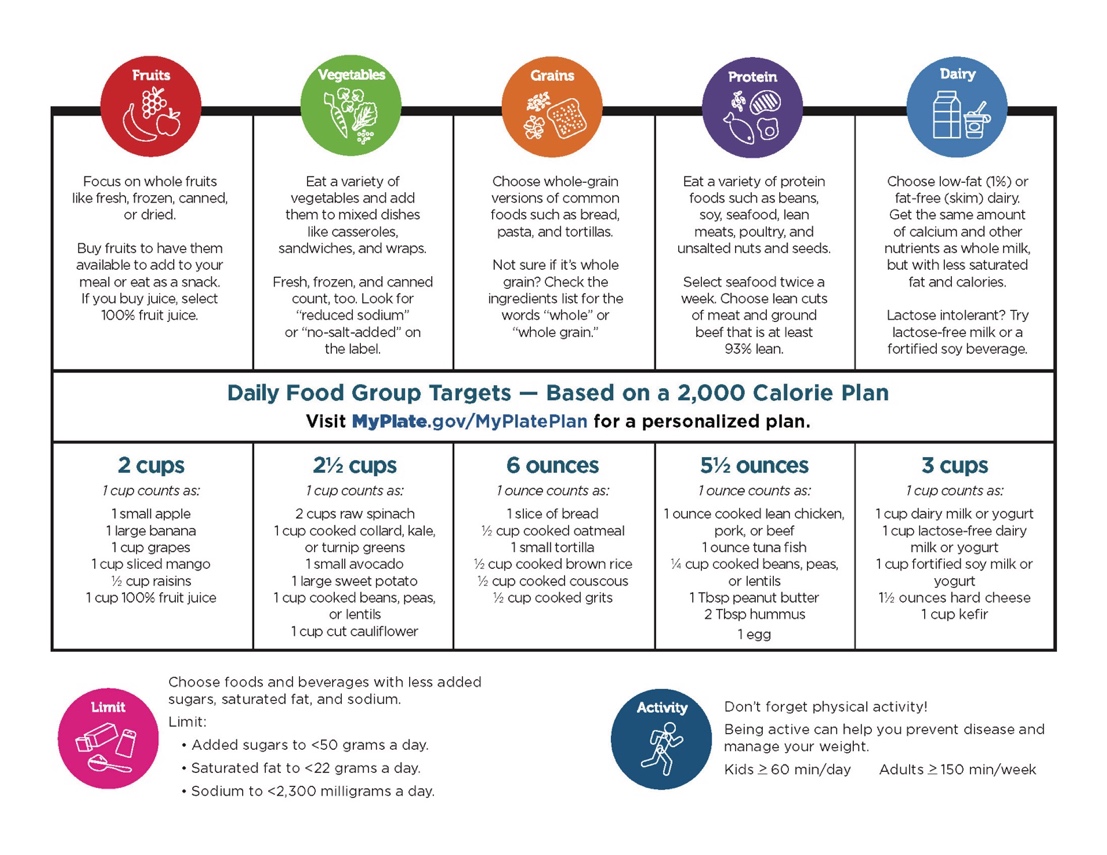I only remember the 4 food groups charts, which stayed pretty much the same throughout my childhood and even shows up in a college textbook I still have from the early 70's. (I majored in Fashion Merchandising - but since that was classified under the Home Ec category, we were required to take one cooking class too)
The chart I'm most familiar with included only 4 servings of bread/cereals, 2-4 servings of dairy (depending on age), 4 servings of fruits and veggies
combined, and at least 2 servings of meats/eggs/fish (or alternatives such as PB or beans).
Compared to that, it's no wonder those who followed the recommendations for the food pyramid packed on the weight, and are still packing on the weight using My Plate.
It took some digging around to find any definitive information about what constitutes a serving using my plate, and how many servings in each category are recommended each day for adults using My Plate, but these are the amounts for a 2,000 cal diet:

How those are supposed to "fit" in the designated sections on that plate is really beyond me.
They have the same amounts of room on the plate for meats and grains, but the total amount of meat is limited to 1/2 oz less than the grains - even though grains are almost always puffed up and 2 ounces of cheerios would be piled up and spilling over that grain section, but meat is compact, and 2 oz of meat would take up a pitifully small portion of the meat section.
Then we have dairy - which doesn't even have a section on the actual plate (it's off to the side, so you can either have milk or yogurt or cheese with your meal, but no more than 1 of those at a meal since you're only allotted 3 servings daily), but never mind that little detail - somehow the nutritionally deficient soy milk counts the exact same as real milk. (Don't even get me started on the push for fat free - good luck absorbing the calcium in either one without any dietary fats)
Oh and then for veggies, a "large sweet potato" (162 cals, 37 g carbs) counts the same as 2 cups of raw spinach. (12 calories, 2 carbs)
For fruits - one large banana won't fit in the fruit section of the tray unless you cut it up and pile up the pieces, but it still counts the same as a small apple or 1/2 cup of raisins. (Never mind that each of those fruits will occupy vastly different amounts of space in the fruit section.)
In the veggie section, 2 cups of raw spinach only counts as one cup of veggies, but 1 cup of cooked greens still counts as 1 cup of veggies (even though 2 cups of raw spinach will usually cook down to about 1/2 cup or less). And 1 small avocado somehow counts as a vegetable instead of a fruit.
But good news - you can have beans, peas or lentils as your meat alternative AND as your veggies! So you can really load up on those, they can cover both the meat and vegetable section of your plate!
(The ones who developed My Plate did a great job on making it near impossible to to figure out exactly which items in those amounts you need to choose from each category each day to get this to work out to 2,000 calories, never mind the actual amounts of vitamins and minerals that are nutritionally available.)

